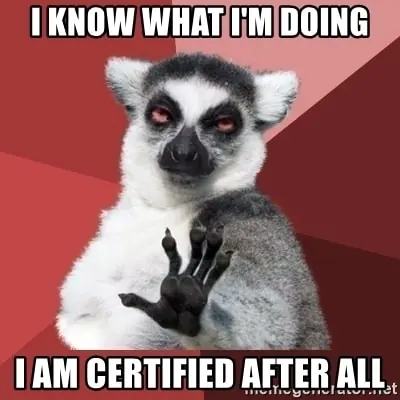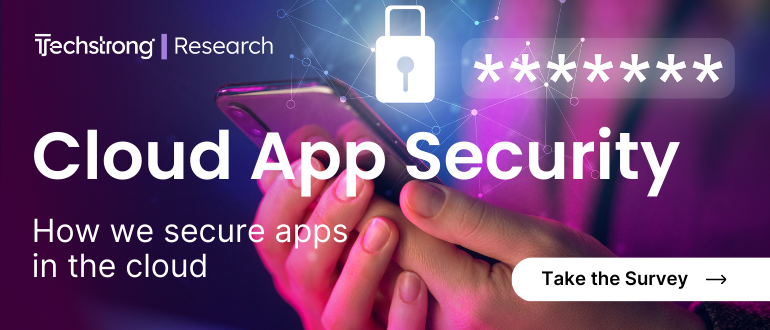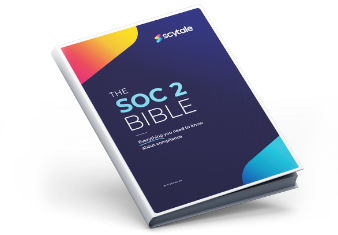
2024-6-18 15:44:37 Author: securityboulevard.com(查看原文) 阅读量:6 收藏
Navigating the landscape of cybersecurity can feel overwhelming, especially for businesses in the defense sector. That’s where the Cybersecurity Maturity Model Certification (CMMC) comes in, designed to provide a standardized approach to security compliance across the Defense Industrial Base (DIB). Originally rolled out in 2020, the CMMC framework aimed to ensure that contractors handling Federal Contract Information (FCI) and Controlled Unclassified Information (CUI) adhere to necessary cybersecurity practices. Fast forward and we’ve already seen a significant update with the introduction of CMMC 2.0. So, what exactly has changed, and what does it mean for your business?
The Importance of CMMC
The CMMC is more than just a regulatory requirement, it is a crucial element in safeguarding national security. With the increasing frequency and sophistication of cyberattacks, ensuring that all contractors in the DIB adhere to stringent cybersecurity practices is vital, helping to mitigate risks by enforcing a baseline of security measures that protect sensitive data.
CMMC and the Defense Industrial Base
The Defense Industrial Base (DIB) is a critical component of national security, comprising hundreds of thousands of contractors and subcontractors. These entities handle a wide range of sensitive data, making them prime targets for cyberattacks. By implementing the CMMC framework, the Department of Defense (DoD) aims to secure this vast and diverse network, ensuring that all participants adhere to a standardized set of cybersecurity practices.
Evolution from CMMC 1.0 to CMMC 2.0
CMMC 1.0 was a comprehensive framework featuring five maturity levels, each including specific security practices and processes. The goal was to provide a clear path for organizations to bolster their cybersecurity posture progressively. However, overtime, feedback from the industry highlighted some challenges, such as complexity and costs involved.
Recognizing the need for a more streamlined approach, the Department of Defense (DoD) introduced CMMC 2.0 in November 2021. This update aimed to simplify the model, reduce the compliance burden, and boost the overall effectiveness of the framework.
Feedback from the Industry
The initial rollout of CMMC 1.0 revealed several pain points for businesses. Many small and medium-sized enterprises (SMEs) found the five-level model to be overly complex and costly to implement. Additionally, the requirement for third-party assessments at all CMMC levels posed significant financial and administrative challenges for many businesses. The feedback from these businesses played a crucial role in shaping the more streamlined and cost-effective CMMC 2.0 framework.
Goals of CMMC 2.0
The primary goals of CMMC 2.0 are to reduce complexity, lower costs, and provide greater flexibility while maintaining robust security standards. By addressing the concerns raised by industry stakeholders, the DoD aims to create a more accessible and effective cybersecurity framework. This approach not only enhances security but also encourages broader participation across the DIB, ensuring that all contractors can achieve and maintain compliance.
Key Differences Between CMMC 1.0 and 2.0
Reduction in Maturity Levels
One of the most notable changes in CMMC 2.0 is the reduction of maturity levels from five to three. Here’s a breakdown of CMMC 1.0 vs 2.0:
- Level 1 (Foundational): Focuses on basic cyber hygiene practices, mirroring the requirements in CMMC level 1 but with fewer controls. This level is primarily for companies handling FCI.
- Level 2 (Advanced): Aligns closely with the security requirements in NIST SP 800-171 and is intended for companies handling CUI. This level introduces more rigorous security practices than Level 1.
- Level 3 (Expert): Targets companies managing the most sensitive information and requires compliance with a subset of NIST SP 800-172, involving the most advanced cybersecurity practices.
Simplified Certification Process
CMMC 2.0 introduces a more streamlined certification process. While CMMC 1.0 required third-party assessments for all five CMMC certification levels, CMMC 2.0 allows a self-assessment for CMMC level 1 requirements, and, in some cases, for Level 2. This change significantly reduces the cost and admin workloads for many small and medium-sized enterprises (SMEs). However, Level 2 contractors handling critical CUI and all Level 3 contractors still require third-party assessments.

Flexibility and Reduced Costs
CMMC 2.0 provides more flexibility in achieving compliance. Under CMMC 1.0, all requirements had to be fully implemented before certification. CMMC 2.0 allows Plans of Action & Milestones (POA&Ms) to address certain gaps in compliance, helping companies gradually meet requirements without facing immediate disqualification and reducing the upfront costs and effort required for certification.
Enhanced Focus on Critical Practices
CMMC 2.0 places a stronger emphasis on critical cybersecurity practices. By aligning Level 2 requirements closely with NIST SP 800-171, CMMC 2.0 ensures that contractors prioritize the most crucial security measures, helping businesses streamline their compliance efforts, as many organizations are already familiar with NIST standards.
Clearer Path to Compliance
CMMC 2.0 offers a more transparent compliance process, with clearer guidelines and fewer ambiguities. The DoD has committed to providing additional resources and support to help companies understand and meet the requirements, including updated training materials, workshops, and dedicated support channels.
| CMMC 1.0 | CMMC 2.0 | |
| Certification Levels | Five certification levels:
CMMC Level 1: base level of certification and consists of practices of basic safeguarding requirements CMMC Level 2: to create a base level of cyber security for any organization who has Controlled Unclassified Information (CUI) and as such requires a higher level of security than those who only have FCI. CMMC Level 3: focus is on protecting CUI, fleshing out the base security practices established in levels 1 & 2, and increasing the overall security of your organization. CMMC Level 4: main focus shifts to enhancing your organization’s effectiveness of protecting CUI from Advanced Persistent Threats (APTs). CMMC Level 5: requires that your organization standardize and optimize your process implementation across your organization. |
Three certification levels:
CMMC Level 1 (Foundational): requires your organization to perform basic cybersecurity practices; however, you may perform these practices in an ad hoc manner without relying on documentation and may reach certification through an annual self-assessment. CMMC Level 2 (Advanced): requires your organization to document your processes to guide your efforts to achieve CMMC level 2 maturity. CMMC Level 3 (Expert): reduces your system’s vulnerability to advanced persistent threats (APTs) by requiring your organization to establish, maintain, and implement a plan to manage the activities needed to implement its cybersecurity practices. |
| Domain Structure | Less security domains. | Additional domains relate more closely to day-to-day operations and include topics such as Incident Response, Anomaly Detection, Supply Chain Risk Management, and System Security Planning. |
| Third-Party Assessors | Does not require C3PAO. | Requires the use of C3PAO for Level 2 and Level 3. |
Achieving Compliance: Best Practices
Understand Your Requirements
The first step to achieving CMMC compliance is understanding which level applies to your specific organization. Assess the type of data you handle – whether it’s FCI or CUI – and determine the corresponding CMMC level, guiding your compliance efforts and helping you allocate resources effectively.
Conduct a Gap Analysis
Perform a thorough gap analysis to identify where your current cybersecurity practices fall short of the required standards, highlighting the areas that need remediation and helping you prioritize your efforts. Consider leveraging automated tools to streamline this process and gain accurate insights.
Develop a Plan of Action
Based on your gap analysis, develop a comprehensive Plan of Action & Milestones (POA&M), outlining the specific steps you’ll take to address identified gaps, along with timelines and resource allocations. A well-structured POA&M will serve as a roadmap to guide your compliance journey.
Implement Necessary Controls
Implement the required cybersecurity controls and practices in line with the CMMC certification level you’re aiming for. Regular training sessions and updates with your team is crucial in maintaining a high level of cybersecurity awareness within your organization.
Leveraging Automation for Compliance
Automation can play a crucial role in achieving and maintaining CMMC compliance, streamlining the readiness process, tracking compliance efforts, and automating evidence collection, just to name a few. By leveraging automation, businesses can reduce the administrative burden and achieve CMMC compliance with ease.
Seek Professional Guidance
If navigating the CMMC landscape feels overwhelming, consider seeking professional guidance. Consulting with cybersecurity experts and leveraging specialized compliance platforms can provide valuable support and ensure you’re on the right track.
Monitor and Improve
Achieving CMMC compliance is not a one-time effort; it requires ongoing monitoring and improvement. Regularly review your cybersecurity practices, conduct internal audits, and update your POA&M as needed. Staying proactive will help you easily adapt to evolving threats and maintain compliance consistently over the long term.
CMMC Changes Wrap Up
The transition from CMMC 1.0 to CMMC 2.0 enables a more streamlined and flexible approach to cybersecurity compliance. By understanding the key differences and adopting best practices, your organization can navigate this compliance framework and its relevant changes with confidence. Remember, achieving compliance not only helps you meet regulatory requirements but also strengthens your overall cybersecurity posture, protecting your business and its valuable data in the long run.
Scytale does not only help you navigate from CMMC 1.0 to CMMC 2.0, but also completely streamlines the process with automated technology and compliance expert services, enabling a faster, smoother journey to achieve and maintain compliance.
The post CMMC 1.0 & CMMC 2.0 – What’s Changed? appeared first on Scytale.
*** This is a Security Bloggers Network syndicated blog from Blog | Scytale authored by Lee Govender, Compliance Success Manager, Scytale. Read the original post at: https://scytale.ai/resources/cmmc-1-0-cmmc-2-0-whats-changed/
如有侵权请联系:admin#unsafe.sh


